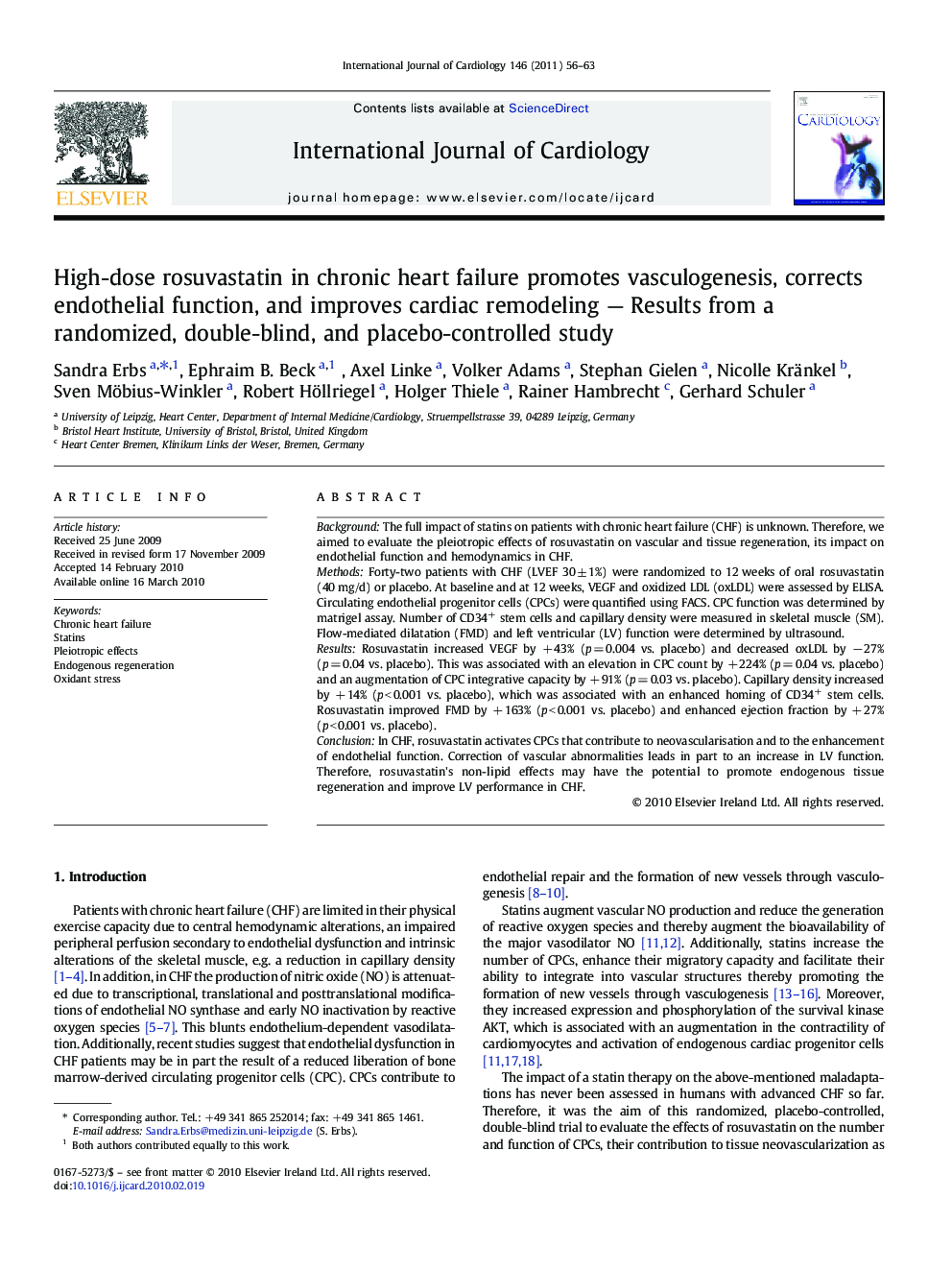| Article ID | Journal | Published Year | Pages | File Type |
|---|---|---|---|---|
| 2931404 | International Journal of Cardiology | 2011 | 8 Pages |
BackgroundThe full impact of statins on patients with chronic heart failure (CHF) is unknown. Therefore, we aimed to evaluate the pleiotropic effects of rosuvastatin on vascular and tissue regeneration, its impact on endothelial function and hemodynamics in CHF.MethodsForty-two patients with CHF (LVEF 30 ± 1%) were randomized to 12 weeks of oral rosuvastatin (40 mg/d) or placebo. At baseline and at 12 weeks, VEGF and oxidized LDL (oxLDL) were assessed by ELISA. Circulating endothelial progenitor cells (CPCs) were quantified using FACS. CPC function was determined by matrigel assay. Number of CD34+ stem cells and capillary density were measured in skeletal muscle (SM). Flow-mediated dilatation (FMD) and left ventricular (LV) function were determined by ultrasound.ResultsRosuvastatin increased VEGF by + 43% (p = 0.004 vs. placebo) and decreased oxLDL by − 27% (p = 0.04 vs. placebo). This was associated with an elevation in CPC count by + 224% (p = 0.04 vs. placebo) and an augmentation of CPC integrative capacity by + 91% (p = 0.03 vs. placebo). Capillary density increased by + 14% (p < 0.001 vs. placebo), which was associated with an enhanced homing of CD34+ stem cells. Rosuvastatin improved FMD by + 163% (p < 0.001 vs. placebo) and enhanced ejection fraction by + 27% (p < 0.001 vs. placebo).ConclusionIn CHF, rosuvastatin activates CPCs that contribute to neovascularisation and to the enhancement of endothelial function. Correction of vascular abnormalities leads in part to an increase in LV function. Therefore, rosuvastatin's non-lipid effects may have the potential to promote endogenous tissue regeneration and improve LV performance in CHF.
